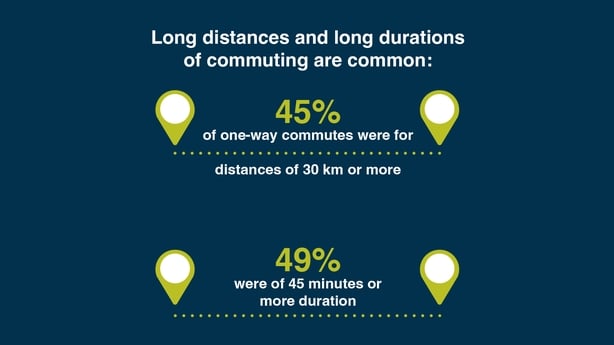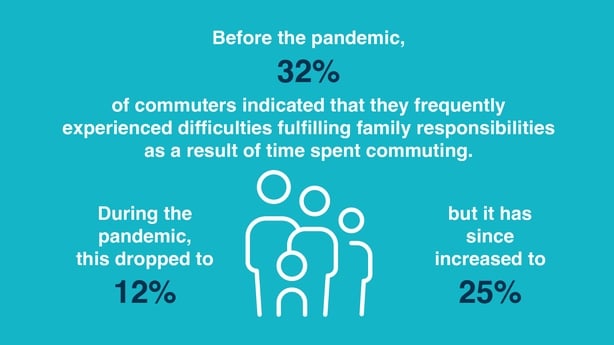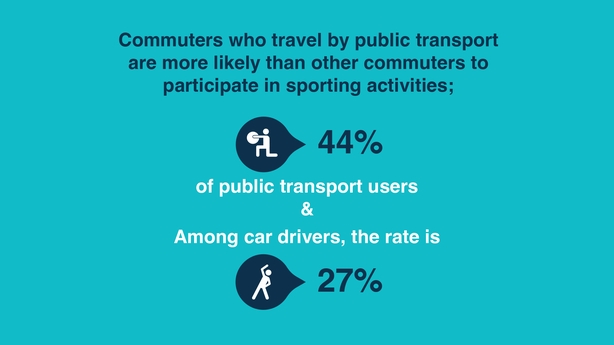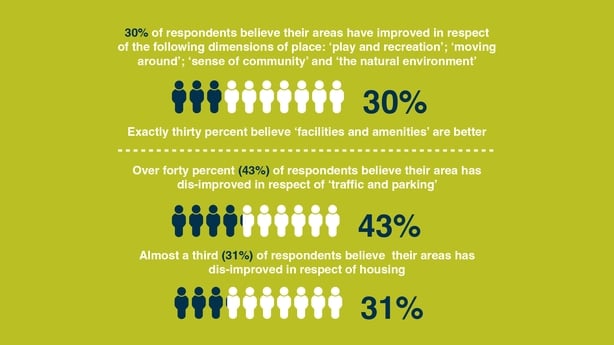Analysis: New research looks at how commuting from rural Ireland for work impacts people's lives, families and communities
By Caroline Creamer, Maynooth University; Des McCafferty, Mary Immaculate College Limerick and Karen Keaveney, UCD
In Ireland, the attraction of living in small rural villages has led to an increase in distance between homes and places of employment, resulting in longer commutes for people. A new research study explores the impact of workplace commuting on people living in rural Ireland and looks at its effects on people's lives, family living and community in small rural towns.
It was carried out using a combination of an online survey of residents and a series of interviews with commuters, community leaders and other local stakeholders. 980 people took part in the online study and 144 people were interviewed as part of the research. Besides the participation of 1,000 people from seven towns across Ireland, there is also an international dimension through two towns in Maryland, United States.
We need your consent to load this rte-player contentWe use rte-player to manage extra content that can set cookies on your device and collect data about your activity. Please review their details and accept them to load the content.Manage Preferences
From RTÉ Radio 1's Drivetime, reporter Barry Lenihan on new analysis which shows the time people spend in their cars getting to work is continuing to rise
The case study areas were chosen based on an analysis of census of population data on commuting, population size, economic activity rates, levels of educational attainment, socio-economic status and the age of the housing stock. The selected communities where the research took place were:
- Ennistymon-Lahinch, Co. Clare
- Kanturk-Banteer, Co. Cork
- Mountbellew-Moylough, Co. Galway
- Newtownmountkennedy, Co. Wicklow
- Sallins, Co. Kildare;
- Aghagallon, Co. Antrim;
- Dundrum Co. Down;
- Middletown, Frederick County, Maryland, US
- North Beach, Calvert County, Maryland, US.
In addition to having a relatively high proportion of the population commuting for 45 minutes or more, the selected places also shared a number of other characteristics. This included younger populations, newer housing, a high percentage of owner-occupied homes and a relatively high proportion of the working population in professional occupations.
Fundamental changes to our working patterns and lifestyle are reflected through the research findings, which was conducted in two phases, firstly from June 2021 to September 2022 (during the Covid-19 pandemic) and October 2022 to December 2023. Remote working very much remains a reality for people living in rural towns, with 38% continuing to work remotely post-pandemic, and one-in-five (17% ) doing it most or all of the time.

Commuting has grown rapidly, partly driven by the effects of house prices 'pushing’ workers to live further from their places of work, but also as a result of the ‘pull’ of rural settlements that offer commuters a range of benefits, including proximity to family and other social networks. When travelling to work, almost half of those commuting (45%) are travelling distances of 30km or more. An equivalent number (47%) have one-way journeys that last more than 45 minutes, more than double the 21% recorded at the 2022 census of population. For the majority of people in these communities, public transport is not an option, with just 12% using it.
The research points to the pandemic creating flexibility around working and commuting regimes that is resulting in people with longer commutes now choosing to travel less frequently than those with shorter commutes. It demonstrates journeys to and from small rural towns have undergone major changes in recent times, now being a more varied and diverse phenomenon, impacting housing, transport, local economic development, place-making and community development, and local and spatial planning.

The impact of workplace commuting upon personal lives is explored. 32% said they frequently experience difficulties fulfilling family responsibilities as a result of time spent travelling. This had dropped to 12% during the pandemic. For people with a commuting time of less than 15 minutes, 4% report difficulties with family responsibilities but this increases to 41% for people travelling more than 45 minutes. People have greater difficulty in fulfilling family responsibilities when commutes are of longer duration, which correlate with diminishing levels of satisfaction.
The research participants focussed on the impact of balancing, or in many cases 'juggling', the needs of home with being present for all of life’s demands. Often, this balance focused on the practical side of family, such as dependent children’s ‘pick-ups’ and ‘drop-offs’, be that for childcare, school, sports and other activities.

One in four had moved the previous five years to the town they are living in. It's not a surprise housing and housing affordability was a key consideration for many, with 30.8% citing it as the primary motivating factor for their move. Yet connecting with family was also a lead in this critical decision-making, with 25.2% citing family connections. Only 6.5% pointed to employment as being key in their choice, indicating the 'pull’ of the living environment outweighs that of workplace convenience. While housing was to the fore for people in Ireland and Northern Ireland in moving house, the quality of local schools was the primary reason for movement in Maryland.
People have a generally good impression of where they are living. Feeling safe, the natural environment, sense of community and community engagement are the highest rated attributes that people associate with their towns. The least satisfactory are public transport, traffic and parking, and facilities and amenities. The latter are all linked either directly or indirectly with commuting, signifying the interdependent role it fulfils in how we live and perceive place. These positive and negative values are consistent across Ireland, Northern Ireland and Maryland.

Volunteerism is correlated with a positive perception of place. Those who volunteer at least a few times per month view their localities more positively than those who do not volunteer in their communities. Commuting time has a small but not significant impact on participation in social or sporting activities, with 72% of people with short commutes and 65% with longer participating in sports at least once a week.
This research is an important contribution to the continued discussion required around the relationship between our living environment, workplace and commuting. It recommends this multifaceted issue requires a comprehensive, collaborative and integrated policy approach, entailing multiple policy sectors and multiple agencies and government departments, as well as local authorities.
This project was funded by the Local Government Management Agency; Clare County Council; the Department of Housing, Local Government and Heritage; the Office of the Planning Regulator, Cork County Council; the Tomar Trust, the Northern Ireland Department for Infrastructure and the Maryland Department of Transportation.
Follow RTÉ Brainstorm on WhatsApp and Instagram for more stories and updates
Caroline Creamer is Director of the International Centre for Local and Regional Development (ICLRD) and a Research Fellow with the National Institute for Regional and Spatial Analysis (NIRSA) at Maynooth University. Prof Des McCafferty is Professor Emeritus in the Department of Geography at Mary Immaculate College Limerick. Dr Karen Keaveney is Associate Professor and Head of Subject for Rural Development in the School of Agriculture and Food Science at UCD. She is a Research Ireland awardee.
The views expressed here are those of the author and do not represent or reflect the views of RTÉ

